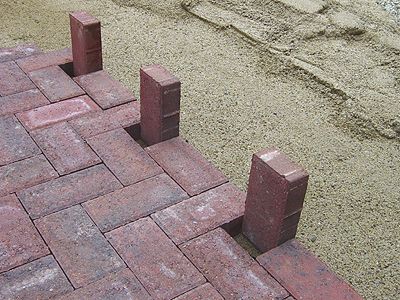Posted: Mon Jul 26, 2004 5:40 pm
As a DIY'er I hope I'm not stepping on anybody's toes by posting a tip, but this was given to me by a pro' over the weekend and is a tip that I haven't seen anywhere on this very informative site.
I'm currently doing my very first block paving project which is my home driveway (135 sq mts). I bit off more than I can chew I must admit because at 57 I'm feeling the pain in every joint. However, I finally started on the more 'enjoyable' part of the job last weekend (in between showers), laying the blocks, but after putting down about 1,000 I realised that I was running out of square and my joints began to look like a wavy tramline on the Golden Mile.
As I was toying with the options, 1. Carry on and hope for the best: 2. take them all up and start again: 3. commit suicide, my local 'expert' called in to see how I was going on.
He saved the day by helping me get everything back into shape and recommending that at every gap along the edges where a cut needs to made, temporarily fill the gap with a brick stood on edge. This will maintain the correct spacing and help to keep everything in line.
It works for me...
I'm currently doing my very first block paving project which is my home driveway (135 sq mts). I bit off more than I can chew I must admit because at 57 I'm feeling the pain in every joint. However, I finally started on the more 'enjoyable' part of the job last weekend (in between showers), laying the blocks, but after putting down about 1,000 I realised that I was running out of square and my joints began to look like a wavy tramline on the Golden Mile.
As I was toying with the options, 1. Carry on and hope for the best: 2. take them all up and start again: 3. commit suicide, my local 'expert' called in to see how I was going on.
He saved the day by helping me get everything back into shape and recommending that at every gap along the edges where a cut needs to made, temporarily fill the gap with a brick stood on edge. This will maintain the correct spacing and help to keep everything in line.
It works for me...
